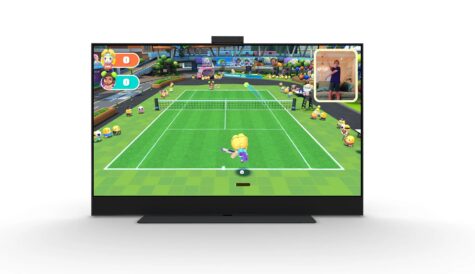Tuning into millennial audiences: how TV providers can re-engage the cordless generation
Media companies have to tune in to the appeal of short-form videos to appeal to younger audience, says Curt Marvis, CEO and co-founder QYOU Media
 With so much content available on the internet, it’s no surprise to the industry that in recent years millennials have turned their backs on traditional cable and satellite TV packages in favour of online video. According to eMarketer, 54% of 18-34 year-olds use YouTube every day, and this figure is only continuing to grow.
With so much content available on the internet, it’s no surprise to the industry that in recent years millennials have turned their backs on traditional cable and satellite TV packages in favour of online video. According to eMarketer, 54% of 18-34 year-olds use YouTube every day, and this figure is only continuing to grow.
In recent years, broadcasters and operators have also been faced with cord-cutting, or even more often these audiences simply never get a cord in the first place, opting instead to use cheaper subscription video on demand (SVOD) services like Netflix and Amazon Prime. In light of these changes, can online video actually be the way to entice back younger audiences to the TV set?
The needs of digital native generations are different; this is an audience that is more preoccupied with SnapChat filters and taking photos of their Instagram-worthy brunches than spending time flicking through the TV guide. There is now a proliferation of online video channels which goes far beyond YouTube to include DailyMotion, Vimeo, SnapChat, Musical.ly, Facebook and Periscope. Younger audiences have grown up on a diet of short form, snackable content that is easily consumable through these sites, whenever and wherever they are.
Broadcasters and operators looking to re-engage this audience need to adapt to cater to these new behaviours and tastes by supplying the ‘lean back’ experience of traditional TV, but combining this with the type of content digital natives are consuming regularly online. From creating custom-built shows, through to using short form video as an add-on service for an existing package, there are many ways to entice millennial audiences.
In a content-everywhere world where millions of videos are uploaded every day, viewers are made to sift through these to find exciting or unusual content – a video with the ‘wow’ factor that makes us want to tune in and share with our friends. Where the broadcaster or programmer once selected the most entertaining or interesting content to schedule for viewers on their TV sets, the internet has not yet mastered this. The internet remains a sea of content, where there might be a really interesting video available that we never get to see. TV providers can use this to their advantage, providing a simpler viewing experience by packaging short form content in an easy-to-consume way for younger viewers.
There are particular genres of video content that are creating the greatest engagement online and translate well into TV experiences for younger viewers. Examples include sport and comedy, where it is becoming increasingly common for younger audiences to seek out the best bits online, rather than tune in for the whole event. We can see this through the roundups of the best goals from a match or a compilation of the funniest jokes from a standup routine. Short form content has the power to condense the best moments or action into a short clip. The subsequent impact enables TV providers to find simple ways to both appeal to younger audiences while also keeping them glued to the screen.
Another way to use short form content is to create an add-on for existing TV services. The Sky Sports service in the UK, for example, has mixed its live offering with video apps that deliver multiple simultaneous viewpoints, ranging from the drivers’ cockpit, to the pit lanes as well as continually available instant replay. These shots build engagement through in-the-action snapshots that capture the attention of viewers. From a business perspective, this also drives more customers towards new online platforms and experiences that also offer additional revenue for broadcasters through advertising or paid services.
Such offerings signal the growing convergence between traditional TV and social media channels. Twitter has just announced partners for its live streaming, which includes companies like NFL, which have traditionally been the realm of cable and satellite companies. In the same way, the opportunity now exists for providers to take that content which has traditionally been available online, and package this up for TV subscribers.
SVOD services and YouTube channels should not stop TV providers and operators from attracting millennial audiences. Put to the right use, short form video can become a powerful tool to re-engage millennial audiences with the type of content they are showing a huge appetite for online. In many cases, TV providers, with their longer heritage in curating video experiences, are well positioned to take advantage of what online video has to offer.



